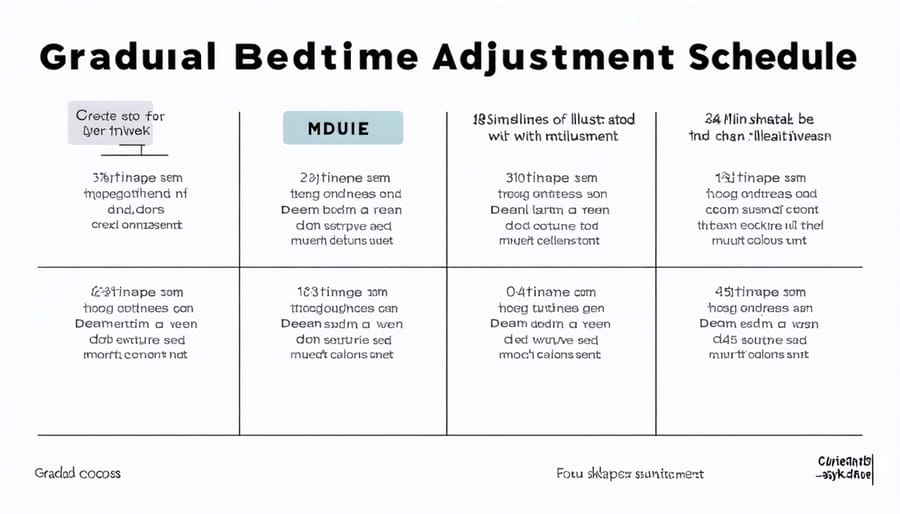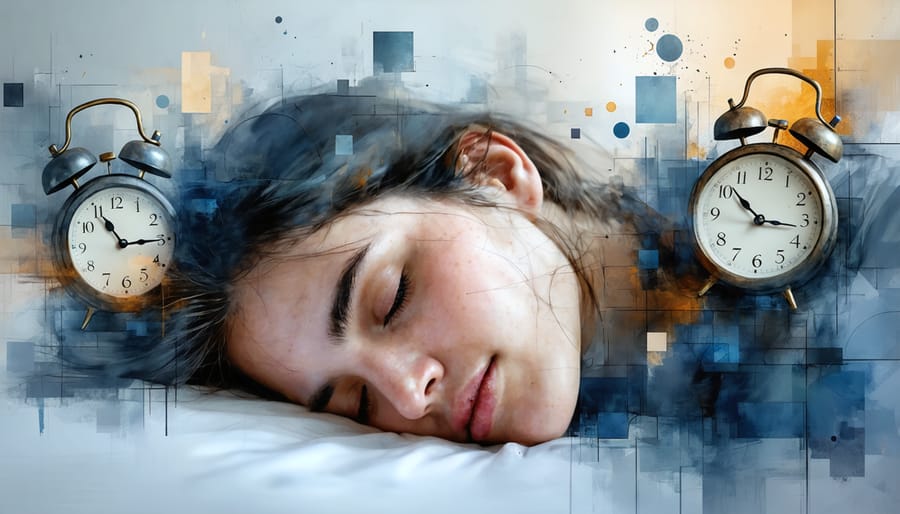Mark your calendars for Daylight Saving Time in Canada: Spring forward on the second Sunday of March at 2:00 AM, and fall back on the first Sunday of November at 2:00 AM. This twice-yearly ritual affects more than just our clocks—it impacts our sleep patterns, daily routines, and overall well-being. While the time change helps maximize daylight hours during Canada’s varied seasons, it can temporarily disrupt our natural circadian rhythms. Understanding when and how to adjust your schedule makes the transition smoother and protects your health. Whether you’re planning your work schedule, organizing family activities, or maintaining your fitness routine, preparing for these predictable shifts helps you maintain your wellness goals throughout the year. Start adjusting your sleep schedule gradually in the week leading up to the change to minimize its impact on your physical and mental health.
When Does Canada Change Its Clocks?
Spring Forward (March)
In Canada, Daylight Saving Time begins on the second Sunday in March at 2:00 AM local time. At this point, we move our clocks forward one hour, changing from 2:00 AM to 3:00 AM. This spring transition means we lose one hour of sleep but gain an extra hour of evening daylight. For 2024, the date falls on Sunday, March 10th. Most electronic devices like smartphones and computers will update automatically, but remember to manually adjust analog clocks, appliances, and car clocks. While this change helps us make better use of natural daylight, it can temporarily affect our sleep patterns and daily routines. Setting your clocks ahead the night before can help you start your Sunday morning smoothly and avoid any scheduling confusion.

Fall Back (November)
In Canada, we “fall back” and return to Standard Time on the first Sunday of November at 2:00 AM. For 2024, this means turning clocks back one hour on November 3rd, effectively moving 2:00 AM back to 1:00 AM. While this change grants us an extra hour of sleep, it also means earlier sunsets and darker evenings. Most electronic devices like smartphones and computers will update automatically, but remember to manually adjust analog clocks, appliances, and car displays. This seasonal change affects most of Canada, though some regions like Saskatchewan, parts of Quebec, and certain areas of British Columbia maintain consistent time throughout the year. The end of Daylight Saving Time can affect sleep patterns and mood, so consider gradually adjusting your sleep schedule a few days before the change.
How Time Changes Affect Your Health

Sleep Disruption Effects
The biannual time change can significantly disrupt our natural sleep-wake cycles, leading to various health hazards of time changes that affect both physical and mental well-being. When we adjust our clocks, our internal circadian rhythm – the body’s natural timekeeper – becomes temporarily misaligned with the external environment. This disruption typically affects people for several days to a week following the time change.
Even a one-hour shift can impact sleep quality, causing difficulties in falling asleep or waking up at desired times. Many Canadians report experiencing symptoms similar to jet lag, including daytime fatigue, reduced concentration, and changes in appetite. The spring transition, where we lose an hour, tends to be particularly challenging as it can lead to sleep debt and increased morning grogginess.
Research shows that these sleep disruptions can affect mood, productivity, and overall energy levels. Children and seniors often experience more pronounced effects, requiring additional time to adjust to the new schedule. Understanding these impacts helps us prepare better and implement gradual adjustments to minimize sleep-related challenges during the transition.
Mental Health Considerations
The shift in daylight hours during time changes can have a significant impact on mental health, particularly during the fall transition when daylight exposure decreases. Many Canadians experience temporary mood changes, including feelings of sadness or irritability, in the days following the time change. This phenomenon, often called the “winter blues,” can be especially challenging for those with existing mental health conditions or seasonal affective disorder (SAD).
To support your emotional well-being during this transition, maintain regular social connections and outdoor activities during daylight hours. Consider incorporating mood-boosting activities into your routine, such as exercise, meditation, or spending time in nature. If you notice persistent feelings of depression or anxiety following the time change, don’t hesitate to reach out to your healthcare provider or mental health professional.
Creating a consistent sleep schedule and exposure to natural light in the morning can help regulate your body’s internal clock and minimize the psychological impact of the time change. Remember that any adjustment difficulties are typically temporary and should resolve within a few weeks.
Your Week-Before Preparation Plan
Sleep Schedule Adjustments
To minimize disruption to your sleep patterns during the time change, experts recommend gradually adjusting your schedule in the days leading up to the shift. Start by modifying your bedtime and wake-up time by 15-20 minutes each day, beginning about four to five days before the change. This small daily adjustment is much easier for your body to handle than a sudden one-hour shift.
During this transition period, maintain consistent sleep habits by following a relaxing bedtime routine. This might include dimming lights, avoiding screens an hour before bed, and engaging in calming activities like reading or gentle stretching. Pay special attention to light exposure, getting plenty of natural daylight during the day and keeping your bedroom dark at night.
Remember to adjust other daily routines as well, including meal times and exercise schedules. This helps your body’s internal clock adapt more smoothly to the new schedule. If you have children or pets, apply these gradual changes to their routines too, making the transition easier for the whole household.

Lifestyle Modifications
Making small adjustments to your daily routine in the days leading up to the time change can help your body adapt more smoothly. Start by shifting your bedtime and wake-up time by 15-minute increments in the three days before the switch. This gradual approach helps minimize disruption to your circadian rhythm.
Pay attention to your meal timing as well. Try to eat dinner slightly earlier or later, depending on whether you’re springing forward or falling back. Light, nutritious meals in the evening can help regulate your sleep patterns during the transition.
Regular exercise is particularly beneficial during this period, but timing matters. If you’re springing forward, exercise earlier in the day to help tire your body for an earlier bedtime. When falling back, a moderate evening workout can help adjust to the later sleep schedule.
Create a consistent wind-down routine that includes dimming lights, avoiding screens, and engaging in relaxing activities like reading or gentle stretching. This signals to your body that it’s time to prepare for sleep, regardless of what the clock says.
Environmental Changes
Preparing your home environment for the time change can significantly ease the transition. Start by adjusting your lighting: gradually dim lights earlier in the evening when falling back, or keep them brighter longer when springing forward. Consider installing smart lighting systems that can automatically adjust to support your sleep hygiene practices. In your bedroom, ensure blackout curtains are properly installed to maintain darkness during changing daylight hours. Adjust thermostats to run on your new schedule, keeping bedrooms cool during sleep hours. At work, rearrange your desk to maximize natural light exposure during your active hours, and consider using a light therapy lamp if needed during darker morning or evening periods.
After the Change: Recovery Tips
Adjusting to the time change doesn’t need to derail your wellness routine. In the days following the shift, focus on maintaining consistent sleep habits by going to bed and waking up at the same time each day, even on weekends. This helps your body’s internal clock adapt more quickly to the new schedule.
Stay active during daylight hours, especially in the morning. A brisk walk or light exercise can help regulate your circadian rhythm and boost your energy levels naturally. If possible, spend time outdoors during bright daylight hours to help your body adjust its sleep-wake cycle.
Pay special attention to your eating schedule. Try to maintain regular meal times and avoid heavy meals close to bedtime. Consider limiting caffeine intake, particularly in the afternoon and evening, as your body adjusts to the new schedule.
Create a relaxing bedtime routine to signal to your body it’s time to wind down. This might include dimming lights, avoiding screens an hour before bed, and engaging in calming activities like reading or gentle stretching.
If you’re feeling extra tired, it’s okay to take a short power nap, but limit it to 20 minutes and avoid napping late in the day. Stay hydrated and maintain a balanced diet rich in whole foods to support your body’s adjustment process.
Watch for signs of time change-related stress or fatigue. If you’re experiencing persistent sleep issues or mood changes that last more than a week, consider speaking with a healthcare provider. Remember, most people adjust to the new schedule within a few days to a week with proper self-care and patience.
Preparing for daylight savings time changes doesn’t have to be stressful when you take a proactive approach. By gradually adjusting your sleep schedule in the week leading up to the change, maintaining consistent meal times, and getting regular exposure to natural light, you can minimize the impact on your physical and mental well-being. Remember to mark the spring and fall time changes on your calendar, set reminders on your phone, and create a personal preparation routine that works for you. Taking these steps will help you transition smoothly and maintain your health during these bi-annual changes. Stay mindful of how the time change affects you, and don’t hesitate to adjust your routine as needed. With proper preparation, you can navigate daylight savings time changes while keeping your wellness goals on track.

